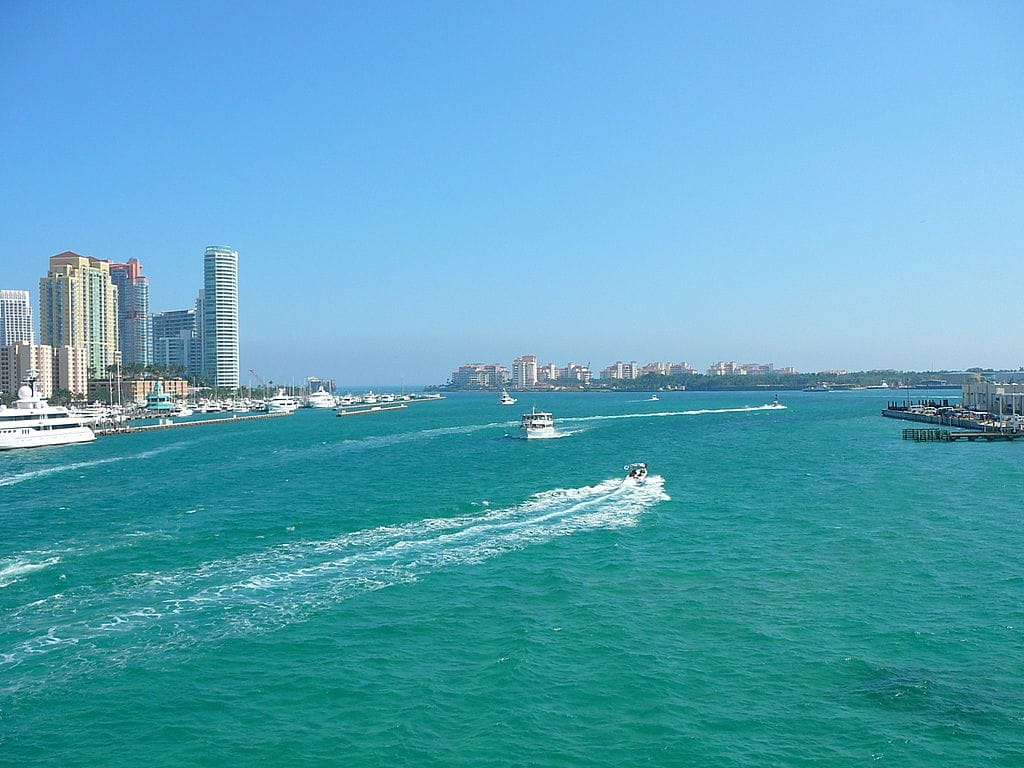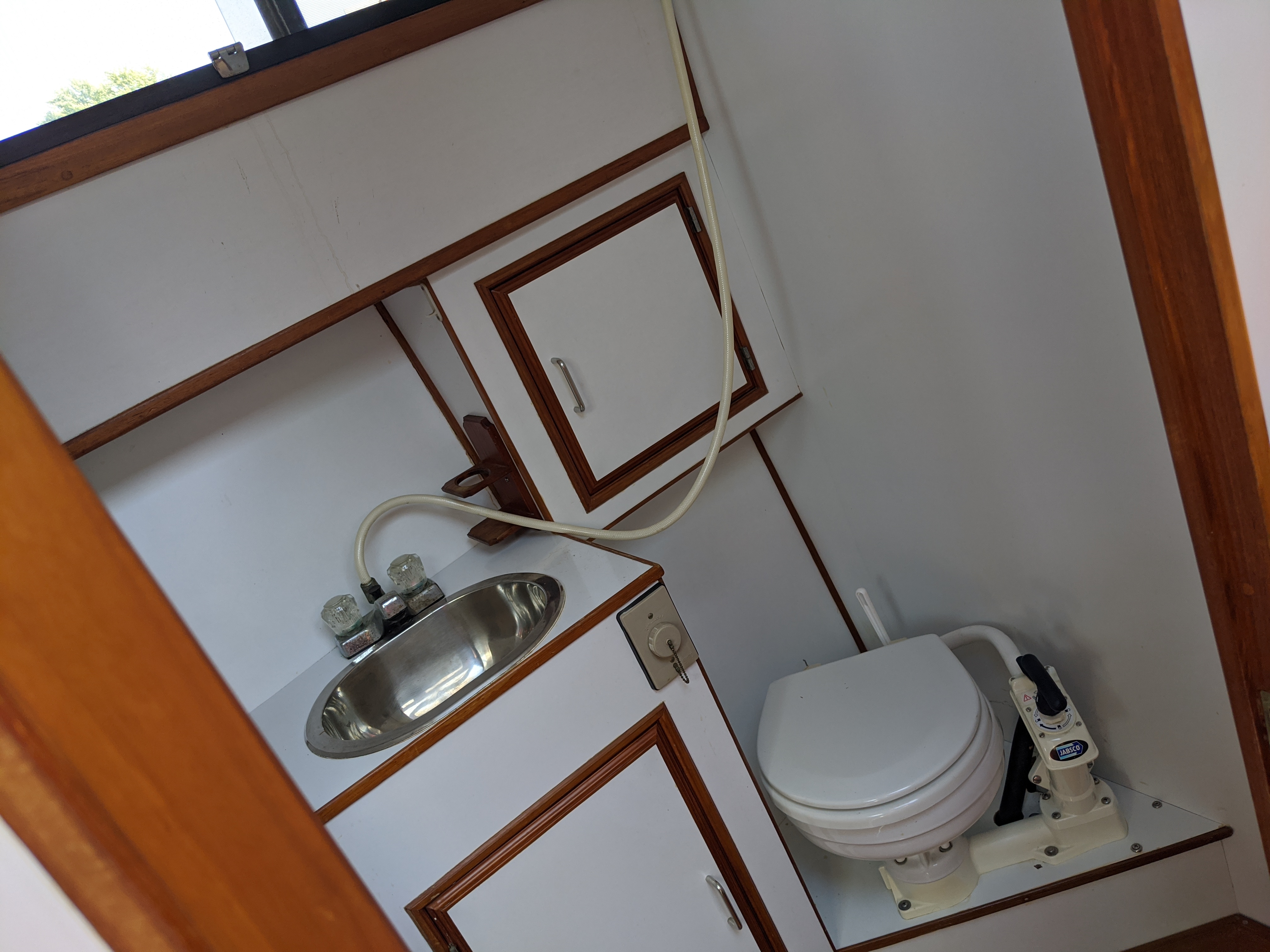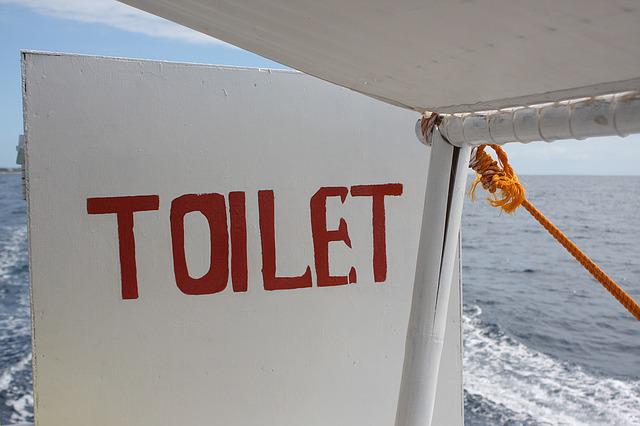Boating Business: Pumping out Your Boat's Holding Tanks

As fun as boating can be, it can have its unpleasantries … things like scraping barnacles, waxing hulls and cleaning bilges … to name a few. The award for most unpleasant, however, must go to the task of pumping out the holding tank.
Classified as a Type III marine sanitation device (MSD), the holding tank is where everything goes (#1 and #2) after you flush. It’s then held in the tank until you empty it. You didn’t think it just disappeared like at home, did you? Wouldn’t that be nice!

If your sailboat or motor boat has a toilet, it legally must be connected to an MSD or “holding tank,” which means you have the task of pumping it out. There are two methods to go about this. One is to travel three miles offshore and empty it – though, there are No Discharge Zones (NDZ), so this can be tricky.
The EPA has a long list of NDZs, so it’s best to check it out before attempting. Some of these zones include the Florida Keys National Marine Sanctuary, parts of the Hudson River in New York, Smith Mountain Lake in Virginia and Lake Tahoe in California/Nevada and many more.
The other method is to go to a dock that has a waste pump out for. This is very similar to what RVs use. You’ll most likely have to do it yourself, but some places have an attendant who either does it or they can assist you. Many marinas have pump-out stations, so you’ll need to find one that’s convenient to your private boat dock rental.
Simple Steps to Pumping out a Holding Tank
- Remove the cap. You might have to use a special tool to do this.
- Insert the pump-out nozzle (make extra sure it’s secure and fitted properly).
- Turn the pump on. Sometimes there’s a hose valve that needs to be opened to start the suctioning process.
- Most hoses have a clear space near the nozzle where you can see the flow (yeah, ewww!), but it’s necessary so that you know when to stop the pump.
- When you no longer see anything going through, turn it off and remove the hose nozzle.
- Put the nozzle in a bucket of fresh water to rinse it. You can also rinse the holding tank with clean water and then pump it back out.
- Close the valve, replace the cap and put the hose away.

Photo: Pixabay
They say you can learn anything from YouTube. Well, apparently you can even learn how to pump out your boat’s holding tank. Here’s a video from BoatUS Foundation on how to properly do that. Give it a watch while you’re hanging out at the boat slip rental. You’re welcome!
US Coast Guard Approved Marine Sanitation Devices
Type I
Type I MSDs have a chemical-based system that uses maceration (a.k.a. pulverizing) and chlorine as a disinfectant to treat the waste. They have an overboard pump-out (as well as the regular pump-out) so that waste can be released offshore.
Type II
Type II MSDs use biological digestion to treat waste (chemicals alone are used). They have an overboard pump-out as well as a regular pump-out. This type is most often seen on large commercial boats greater than 60 feet in length (rather than recreational boats), so you wouldn’t see this type on a vessel at a private boat slip rental.
Type III
Type III is the simplest and is what’s found on most recreational boats. They have a holding tank that “holds” waste until you pump it out. This type uses enzyme deodorizers and does not have an overboard pump.
Porta Pottys and composting heads are an example of a Type III MSD. The great thing about the composting head is that there’s no plumbing, through-hull fittings or holding tank to empty. Solid and liquid waste is stored separately. Liquid waste is stored for disposal, or it evaporates. Solid is mixed with natural elements such as peat moss, coco coir, wood chips, sawdust and even chopped straw to naturally decompose. It dries out and prevents odors, which is a terrific feature for a private boat lift rental.
Composting heads can be quite a bit more expensive than the typical marine toilet. Though, the convenience factor just might make them perfect for a liveaboard boat at a private boat slip for rent.
Whether you’re in the market for a new MSD, are replacing one or are just curious, we hope this has helped with any questions you might have. Check out BoatUS for more information and legalities.



